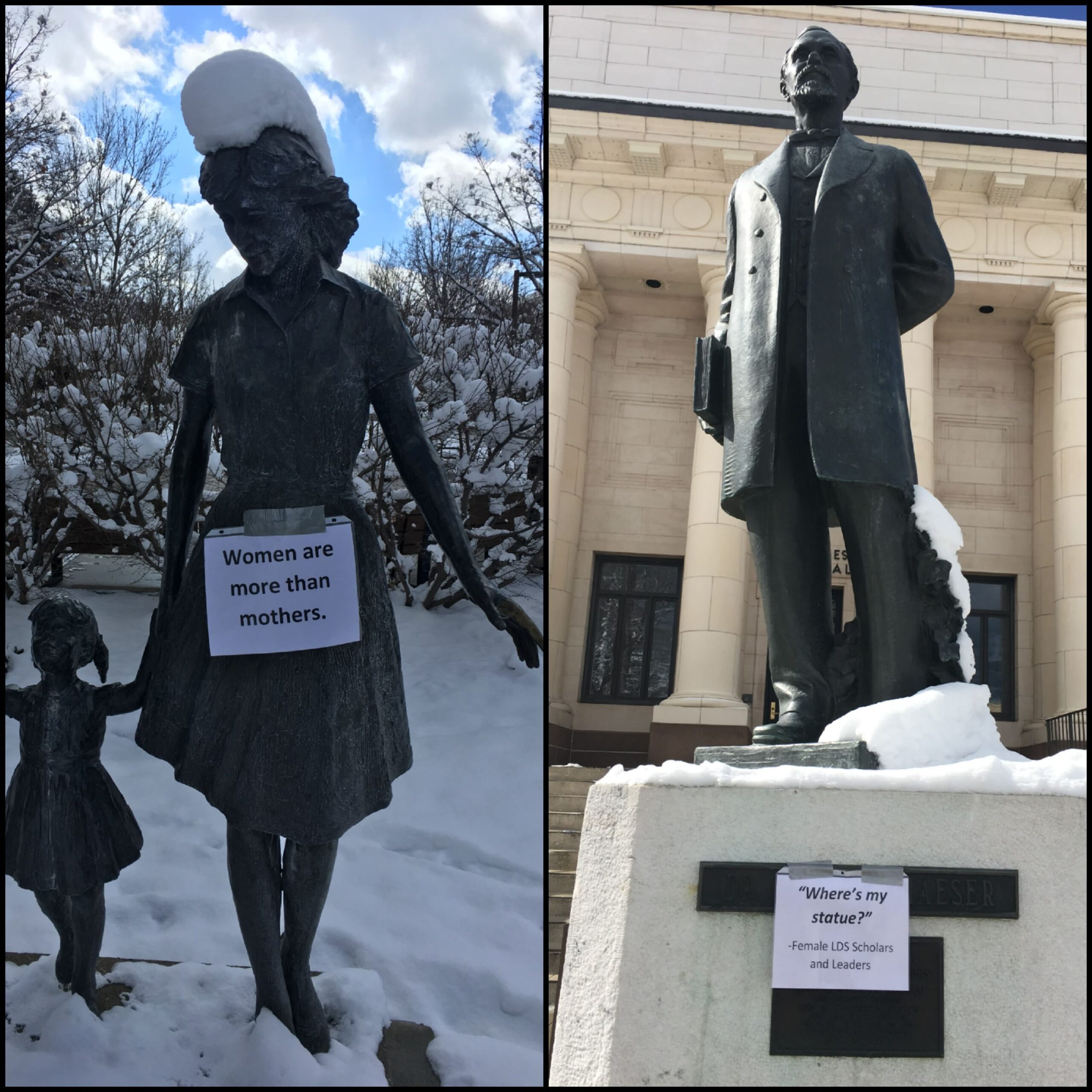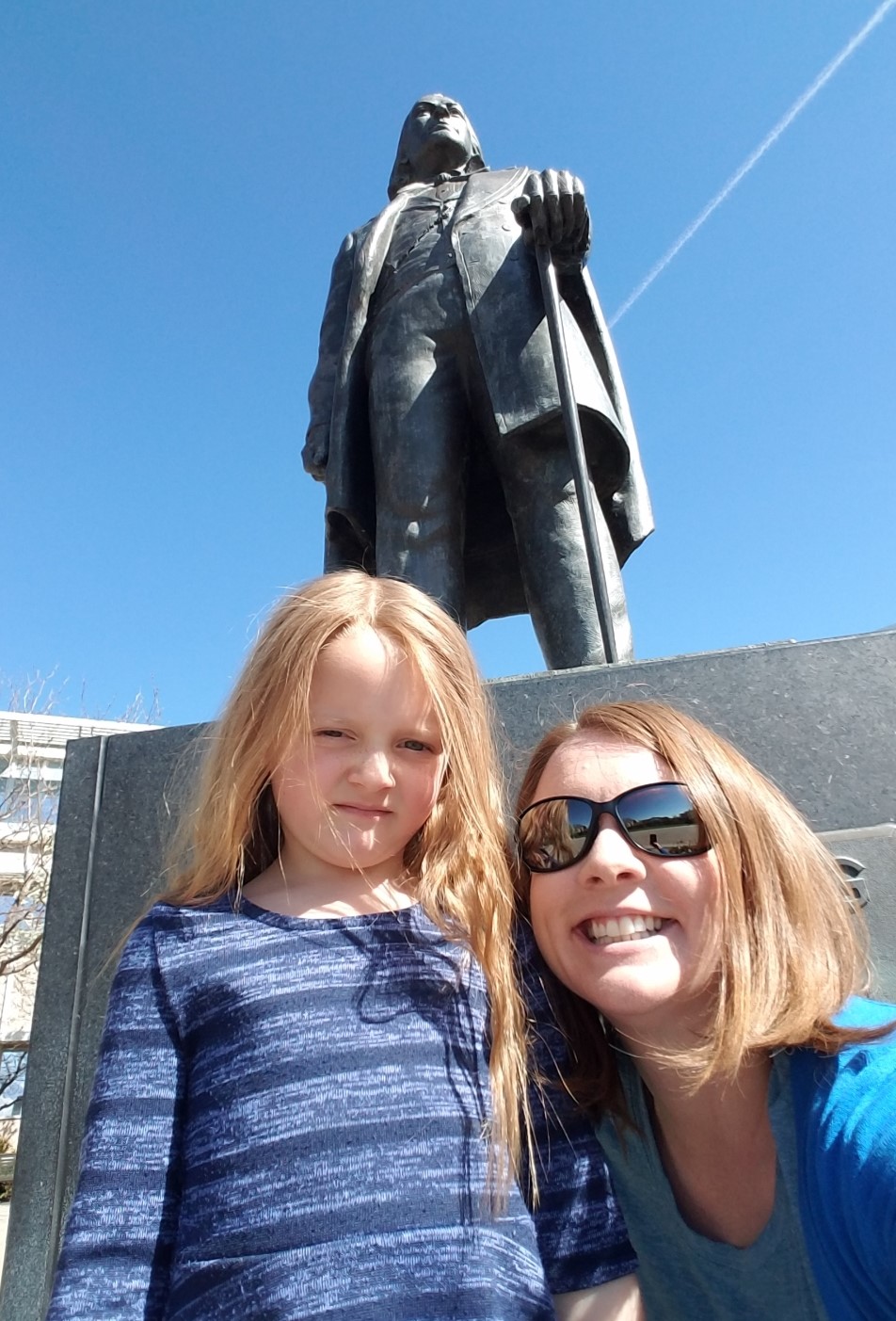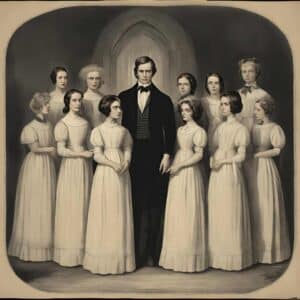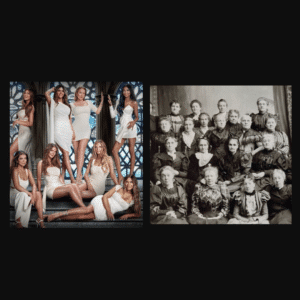I recently made a batch of rolls from a box of Lion House bread mix, sold at Deseret Book stores. On the back of the box is a large image of Brigham Young, who according to the accompanying bio loved to “personally taste” the bread made at the Lion House pantry, and his favorite was the bread they turned into this recipe for rolls.
My first question was, “Why is the space on the back of the box dedicated to a man who ate this bread, rather than the women who actually created, baked and perfected the recipe? Baking is hard to get right. How on earth does simply eating the bread elevate Brigham to the level where he deserves half of the packaging to be a picture and story about him?”
The answer most people would give is that he’s the most interesting and well known figure associated with the rolls, so of course they talk about him and put his picture there. The woman who created this recipe doesn’t have a prominent place in history and so no one would be interested in seeing her picture.
But why doesn’t she have a prominent place in history? I know why. It’s because men like Brigham Young are the ones who wrote the history. How do we know her story isn’t interesting? Have we tried to find out who she was or what she did? I mean, she most likely crossed the plains and lived in Salt Lake City in the early days, rubbing elbows with “important” people like Brigham Young, who apparently loved her baking. Did he make her one of his 50± wives for her breadmaking skills? Did she have kids? Did she come from Scandinavia? From England? Was she the only convert in her family and traveled halfway around the world by herself as a teenage girl in the 1800s? Did she write poetry? Sing? Dance? What was her story, her name, and her crazy life story that led her to baking bread in the Lion House Pantry on the frontier with the crazy outcast group of religious people they called the Mormons? How could her story NOT be fascinating?
Do women’s names and stories on baked goods not sell as much product? I can think of a lot of women’s names on food items, like Betty Crocker, Ms. Fields, Auntie Anne’s, Sara Lee, Little Debbie, Wendy’s, Mrs. Butterworth, Marie Callender, and Lorna Doone. I don’t know anything about any of these women. I don’t even know if they are real names of real people or not. But marketing with a female face and name seems to have worked out pretty well for those brands, so why are we marketing Lion house rolls with Brigham Young’s name?
Yet here we are. Even in the intensely female dominated arena of bread baking in the 19th century, the man who passively ate this bread is the one featured rather than the woman who actively created the bread. This is exactly what happens when history is written by men, and not women – only the men’s stories and names are common knowledge to the future generations. This box of rolls is just a small example of this enormous problem, and what are we doing in our church to fix this problem in the future? Not very much, considering we still give women almost no talks in general conference, and women hold only a fraction of higher leadership positions in the church (and none with authority). When the church looks back at 2021 a hundred years from now, they’ll probably still only see and hear the stories of men.


I graduated from Brigham Young University, coincidentally a place with no statues honoring women for accomplishments outside of nameless motherhood, where only three out of 112 buildings on campus are named after women (and only one of those is an academic building). A few years ago a student named Alyson Adams did a guerrilla art project for her BYU Art Education class where she printed out signs asking questions like “Where’s the building named after me?’ – Female LDS Scholars and Leaders'” and taped them to campus statues, raising awareness about BYU’s severe lack of female representation on campus. She said, “It seems like (women) are almost an invisible population in terms of representation in visible manifestations around campus. Within our BYU community and church community, we talk about all of these great men who have done wonderful things. But we forget about the women who were there too.” (You can read the Daily Universe article about her art project here.) You can also see some of the signs she put up around campus below:


I have a picture with my youngest daughter and myself from a couple years ago with the statue of Brigham Young on BYU campus. I remember she wanted to stop and rest because we’d walked a long way from our car and it was a warm day, and I still needed to make it a bit further to pick something up from the athletic department for a fundraiser. We were sitting by Brigham, a man whose checkered history has given me many complicated feelings about having his name on my college diploma, and I laughed at the weirdness of the situation and took a selfie with him. It took me a minute to find this old photo, but here we are in 2019, smiling and looking up Brother Young’s nostrils.
I just hope that by the time my daughter is strolling across BYU campus with her own daughter, they’ll stop to rest in the shade of a prominent female leader’s statue instead, like maybe Eliza R. Snow or Jane Manning James. Lady nostrils are much nicer to look up than Brigham’s, if you ask me.








14 Responses
Thoughtful and to the point. Are any female authors being nurtured in the church and in their publications? This one should. Also send this the SLTribune please.
Woman perfects recipe. Woman makes recipe. Man eats recipe. Man takes (or is given) credit for having eaten. So much this. Thanks for the thought-provoking article. And I hadn’t heard about the guerrilla art project–looking forward to looking it up.
I’m not saying 4 female speakers at conference is enough, but that’s how many spoke this month. Is there any particular reason why you chose to focus on April rather than October 2021?
No reason! Nobody’s made a meme for October 2021 yet, so I used the April 2021 conference. (If you’ll make me one, I’ll swap it out. )
https://scontent.fmli1-1.fna.fbcdn.net/v/t1.6435-9/244862399_10223394283979936_5079445857438765429_n.jpg?_nc_cat=110&_nc_rgb565=1&ccb=1-5&_nc_sid=8bfeb9&_nc_ohc=H32Zcl9mGT8AX_x6Sz1&_nc_ht=scontent.fmli1-1.fna&oh=49b5416e945db840cf5e48d87000b959&oe=61922E35
The link above is a meme for October 2021 General Conference. But here is a shorter link to the same meme.
https://missedinsunday.com/wp-content/uploads/2021/10/ldsconf-oct-21-men-v-women.jpeg
Oh, thanks! I only knew to look on their Facebook page and they hadn’t posted it there, so I figured they hadn’t made a me one yet.
I just finished reading “The Making of Biblical Womanhood: How the Subjugation of Women Became Gospel Truth” by Beth Allison Barr right before I read your post. Barr teaches medieval and early modern history and women’s early history classes at Baylor University. She’s also the wife of an enlightened evangelical pastor. While the book was written for Evangelical women who actually have it worse than we Mormon women do in some ways there is so much that we have in common with regard to still being told that our only place is in the home cranking out babies and obeying our husbands cheerfully and willingly. We both get the same female chastity and modesty talks and having to be responsible for boys and men not becoming inflamed by lust if they so much as see a shoulder or an inch of skin above the knee cap. We both get told that a college education is only important in case your spouse dies or becomes disabled-heaven forbid if a divorce should happen. Leaders of both groups counsel women to stay in marriages marred by abuse of any kind. Single women are treated as pariahs. The idea of women in major leadership positions where they can make real changes is an anathema to the all male leadership. So much of the book spoke to me because the worship of all things male at the expense of girls and women isn’t just a problem that our church has. There were so many times as I was reading that I found myself wishing that the girls and the women of our own church knew about the origins of patriarchy and how the Christian church bought into it after the apostles had died and those who had known them and their teachings were also dead. Patriarchy is NOT God’s plan for His daughters. It never has been.
Joseph Smith may have had many exciting things in mind for the girls and women of early church in mind when he organized the Relief Society. Unfortunately, he was too busy putting out too many fires because of his not so secret polygamy, and he never wrote down what a kingdom of queens and priestesses who would be on an equal footing with the men would look like or how to implement it. After he was killed Brigham Young shut down the Relief Society and refused out of hand to believe that Joseph had founded it even though Eliza Snow had all of the minutes and over 1500 women were members and could’ve all quoted chapter and verse about their doings as could Heber C. Kimball and other members of the Twelve who’d attended meetings. Brigham didn’t believe anything that he chose not to believe and that was that. This continues to be a big problem with our leaders today.
One thing that I found particularly fascinating was that the translation(s) of the scriptures we use can actually reinforce patriarchy because of who the translators were and what their ideas of women were. I’m sorry, but the early 17th century men who worked on the KJV were not an enlightened group of men when it came to women. I checked out some of their sermons and ecclesiastical rulings online, and the majority of these men felt that all womenkind were basically the spawn of Satan. If you compare their translation-the KJV-our church’s favored translation (although there is now Tom Waymount’s translation of the NT in modern language which I haven’t read yet) with the NIV (New International Version) which has the most up to date biblical research and manuscripts that the KJV scholars didn’t have, you will notice some big differences especially when the KJV uses specific gendered language and the NIV does not because the original Greek did not either. Those men were making their own biased points 400 years ago, but because our church doesn’t encourage us to read other translations of the scriptures or read scholarly Bible studies written by people who actually know Greek, Aramaic and Hebrew plus know the history and culture of the time and places where the gospel was being taught nobody from Joseph Smith to our current leaders can base their treatment of women on what the scriptures really say.
It has never made sense to me since I was a teenager that Jesus would elevate women to a high level, one that they’d never had before. They were His friends; they sat at his feet with the apostles; they didn’t desert Him at His crucifixion; they were the first ones to testify of His resurrection; they preached the gospel and ran branches of the church in their homes; they served as missionaries to spread the gospel. And then it all stopped. The women didn’t ask for it to stop then or in Nauvoo or at the turn of the 20th century when Joseph F. Smith forbid them from anointing sisters and giving them blessings and prophesying. Men made it stop. Why?When I asked my seminary teacher this question in my church history class he said that I was full of Satan! (He was fired the next year for doing things that would please Satan.) I could go on and on but I won’t. PLEASE read this book! Patriarchy is not and NEVER has been God’s plan for women. Read in the NT how Jesus treated women and how women were integral to the early church. WE STILL ARE.
What an interesting book! Thank you for recommending it and for all of your comments. It’d be so interesting to meet some of the original Christians, bring them to modern day, and see what they think about the way we’re running things in 2021!
That book has been on my to-read list…
I’d also recommend Elaine Pagels’ Then Gnostic Gospels. Her research about early Christianities was fascinating, particularly how the power dynamics played out in different sects. Made me think about how structures that support institutional longevity aren’t necessarily structures that are the One True Way of doing things.
I often skip longer comments (insert monkey covering her face emoji here) but I really appreciate you taking the time to write your thoughts and share a book suggestion. I was exactly what I needed to read tonight. Thanks!
Love this post, Abby!!
This is why feminism gets a bad rap. Woe is me woe is me why are men so bad to us?
This post is fantastic! And exactly what I needed to boost my weary spirit as we are finishing D&C which feels more often to me like scripture written by men for men.